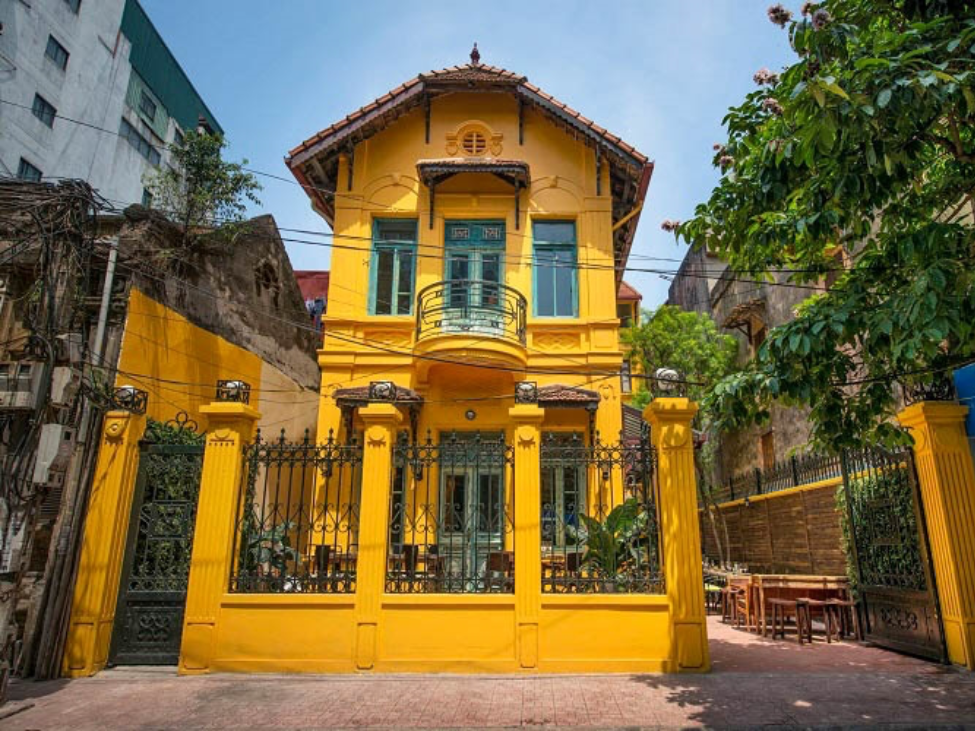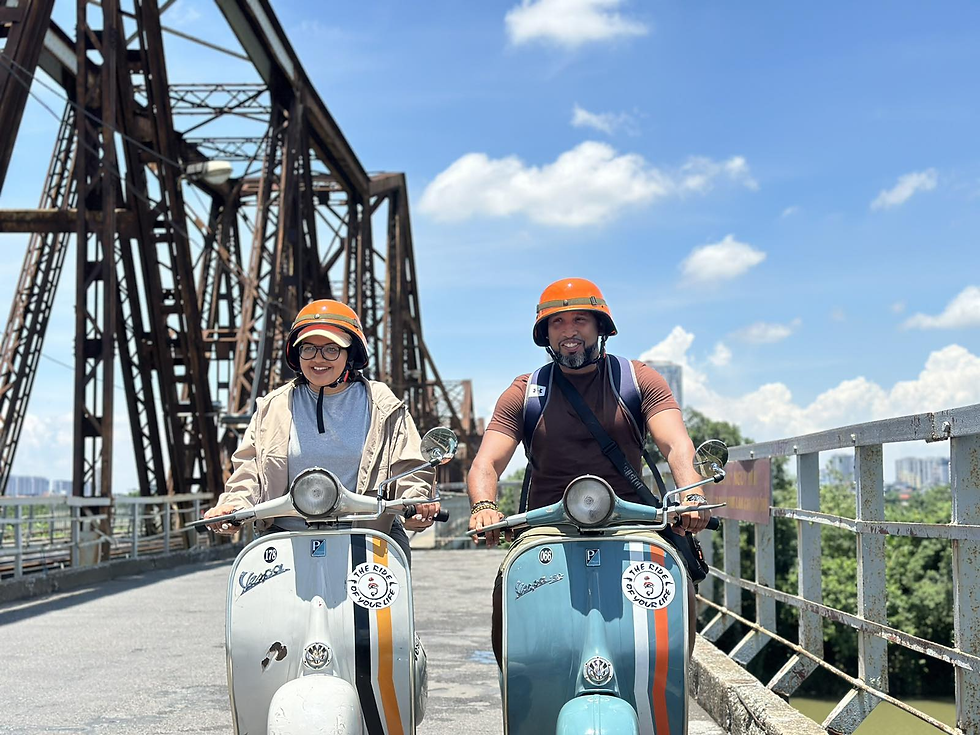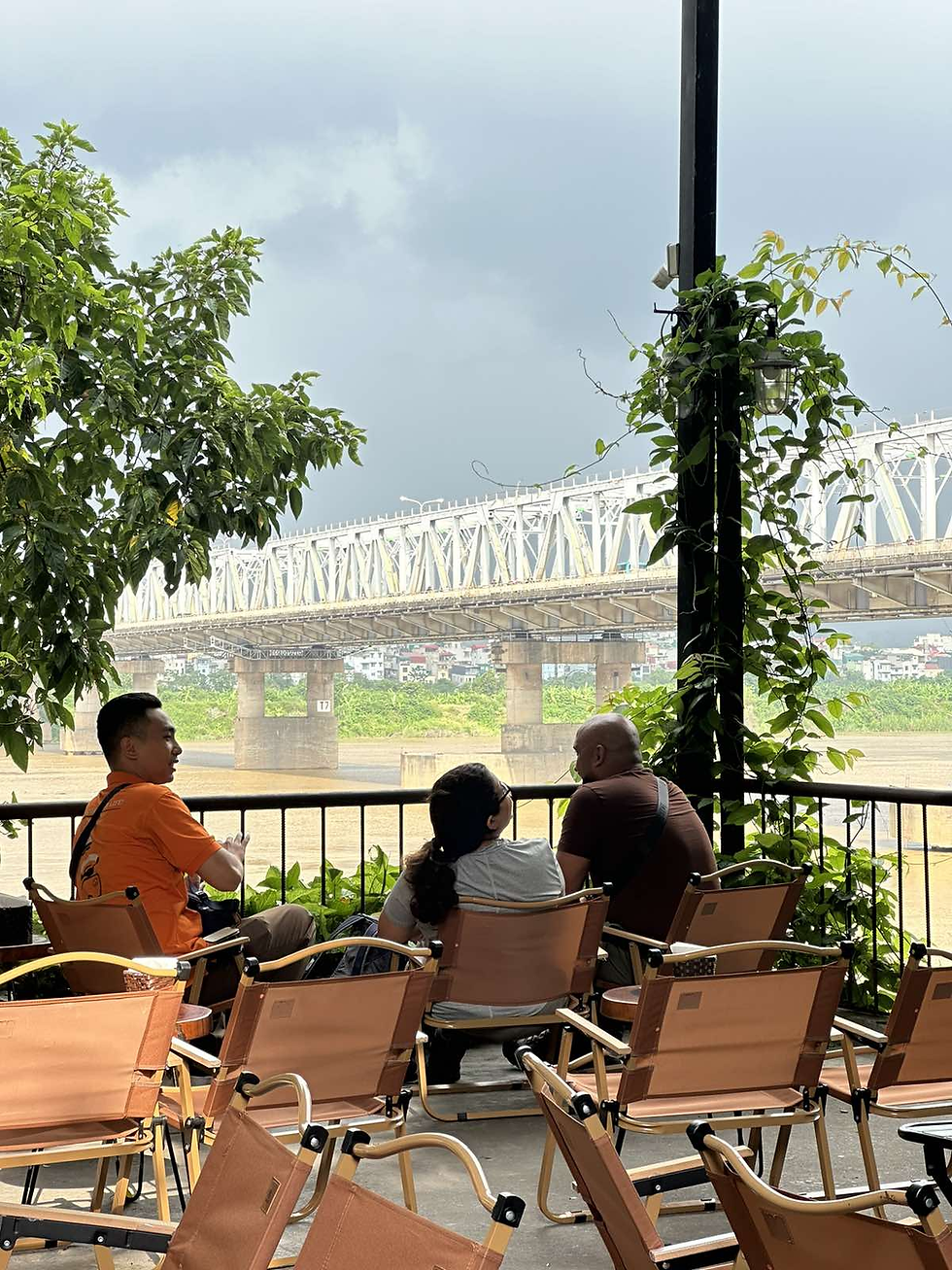7 Hidden Hanoi Gems: Your Ultimate Vespa Tour Hanoi Adventure Guide 2025
- Vespa Adventures

- Jul 22
- 5 min read
What Hidden Spots Do Tourists Miss in Hanoi?
95% of tourists stick to Hoan Kiem District's Old Quarter and miss authentic local experiences. The Vespa tour Hanoi adventure reveals 7 secret locations where locals live, eat, and gather daily. These spots offer genuine Vietnamese culture impossible to find in guidebooks.
The spirit of Vespa exploration connects travelers to neighborhoods where three generations work side by side and family recipes create flavors found nowhere else. Vietnamese culture thrives in these forgotten corners, away from tourist crowds.
Where Can You Find the Original Egg Coffee in Hanoi?
Café Giảng at 39 Nguyen Huu Huan serves the original egg coffee recipe since 1946. This tiny establishment, smaller than most living rooms, created Vietnam's famous egg coffee when Mr. Nguyen Van Giang experimented during milk shortages.


The elderly owner still hand-whisks eggs, creating creamy foam atop robust Vietnamese coffee. Local office workers crowd plastic stools during morning breaks, sharing conversations that have echoed here for 75+ years. Regular customers bring their children, creating generational coffee traditions.
What Secret Night Market Do Locals Use in Hanoi?
Dong Xuan Market's second floor transforms into a hidden night market after dark. While tourists explore ground level, local families gather upstairs for authentic Vietnamese dishes rarely found elsewhere.


Vendors serve grilled pork wrapped in wild betel leaves, sticky rice with mung beans, and bánh mì made with neighborhood-baked bread. Children play between stalls while mothers teach daughters family recipes. This Hanoi tourist attraction feels like the city's living room.
Hanoi night Vespa tours reveal similar hidden gathering spots throughout Vietnam's capital.
Where Do Locals Drink Coffee Near Train Street in Ba Dinh District?
Local families operate coffee stations in front rooms just steps from Train Street tracks. These impromptu coffee shops serve neighbors and railway workers who gather between train schedules for under $1 per cup.

Elderly men play Chinese chess while mothers share neighborhood news. Teenagers practice English with friendly foreigners. The railway schedule creates natural conversation rhythm—intense discussions during quiet periods, sudden silence as trains pass, then renewed laughter.
Discover more spots in our guide to 5 hidden cafes on Train Street that locals frequent daily.
What Secret Rooftop Garden Exists in Hanoi's Old Quarter?
Quoc Su Pagoda has a hidden rooftop garden accessible via secret stairs behind the main temple. This peaceful sanctuary offers panoramic views over Hanoi's chaotic streets while remaining unknown to most visitors.

Local residents use this space for morning tai chi sessions and quiet meditation. Elderly visitors tend small herb gardens, growing ingredients for traditional Vietnamese medicine. Buddhist monks occasionally join visitors for informal conversations about Vietnamese philosophy.
"85% of meaningful travel moments happen in places that don't appear on tourist maps—these hidden corners create memories that last decades."
Where Do Locals Eat Authentic Street Food in Hanoi?
Bia Hoi Corner's hidden backyard kitchens serve Hanoi's most authentic street food. While tourists drink cheap beer out front, locals slip through narrow passages to family-run operations preparing neighborhood meals for generations.

Grandmothers roll fresh spring rolls while daughters grill meat over charcoal braziers. Menus change daily based on market availability, ensuring every meal feels like discovery. These kitchens represent authentic things to do in Hanoi for food lovers seeking genuine experiences.
What Artists Quarter Exists in Hanoi's French Colonial District?
Crumbling French villas near Red River house Hanoi's creative underground. Young Vietnamese painters, sculptors, and musicians work in affordable spaces, creating contemporary art blending traditional Vietnamese culture with modern influences.

Visitors wander through open studios, watching artists work and purchasing original pieces directly from creators. Weekend exhibitions feature experimental performances attracting Hanoi's bohemian community. This creative quarter offers fascinating contrast to commercialized art districts.
Where Can You Experience Traditional Fishing Culture in Hanoi?
Long Bien Bridge becomes a fishing platform at dawn where locals practice traditional techniques. This century-old French-built railway bridge hosts a small fishing community casting nets into Red River waters.
Image: Early morning fishermen casting nets from historic Long Bien Bridge Alt Text: Traditional fishermen dawn Long Bien Bridge Red River authentic Hanoi culture File Name: long-bien-bridge-dawn-fishing-traditional-hanoi.jpg


Fishermen welcome curious visitors, sharing stories about seasonal fish migrations and river changes over decades. Early morning brings best catches and spectacular views as mist rises from water. This peaceful ritual reveals Hanoi's relationship with the Red River.
When Should You Visit These Hidden Hanoi Spots?
October through March offers ideal weather for exploring hidden Hanoi locations. Early morning hours (6-9 AM) provide most authentic experiences when locals begin daily routines and vendors prepare fresh ingredients.
Morning exploration reveals the city's true rhythm—street sweepers creating leaf patterns, vendors arranging displays with artistic precision, gentle light filtering through French architecture. Late afternoon (4-7 PM) offers excellent photography lighting and evening activity transitions.
Traffic patterns change throughout the day, making local guide knowledge essential. Many hidden spots operate on informal schedules—family establishments might close for personal celebrations, seasonal vendors appear only during specific weather. For comprehensive planning, check our what to do in Hanoi in a day guide.
How Do You Navigate Hanoi's Hidden Alleys Safely?
Local Vespa guides know 500+ secret alleys and family-run establishments throughout Hanoi. Navigation through maze-like passages requires understanding traffic patterns, cultural etiquette, and timing for optimal experiences.
Experienced guides ensure visitor safety while providing cultural context that makes each location meaningful. They know backup options when plans change and can introduce visitors to local families for authentic interactions.
Explore comprehensive destination insights with our Hanoi city exploration guide or learn about authentic Vespa adventures perfect for urban exploration.
What Vespa Tours Reveal These Hidden Hanoi Gems?
Join Hanoi Vespa tours for comprehensive exploration of all 7 hidden locations. Specialized tours include Hanoi After Dark for nighttime experiences and Hanoi Photo Tour for capturing authentic moments.
The Insider's Hanoi Morning tour reveals early-morning secrets when the city awakens. Hanoi Countryside Adventuresextends discovery to rural villages surrounding Vietnam's capital.
Discover more with us and create memories lasting a lifetime. Authentic adventures happen when you venture off beaten paths with locals who call this incredible city home.
For complete attraction planning, reference our 20 must-visit attractions in Hanoi guide.
FAQ: Hidden Hanoi Vespa Tour Hanoi Adventure Questions
Q: What's the best time to visit hidden Hanoi spots?
A: Early morning (6-9 AM) offers most authentic experiences when locals start daily routines. Vendors prepare fresh ingredients, families begin work, and cultural activities happen naturally. Late afternoon (4-7 PM) provides excellent photography lighting.
Q: Are Vespa tours safe for beginners exploring Hanoi's hidden alleys?
A: Yes, experienced local guides ensure safety while navigating narrow alleys and busy streets. All tours include safety briefings, helmets, and guides who know safest routes to hidden gems plus emergency procedures.
Q: How do you find authentic local experiences in Hanoi without a guide?
A: Local guide knowledge increases authentic discovery chances by 400%. Many locations have no English signage and require cultural understanding to access safely. Independent exploration is possible but misses cultural context.



Comments